Kingston Heath Golf Club is generally considered to be one of the finest golf courses in the world, though it is often overshadowed by it's more publicized neighbor, Royal Melbourne. However, it clearly holds its own, on account of a strong, intricate routing on approximately 125 acres that is able to make the most of what might be considered only limited changes in topography. Indeed, the course is generally flat, utlizing a a couple of broad ridges which make a handful of tee shots blind (1,6,8,9,15 and 16), and leave a few of the approach shots the same (14 and 17). The size and orientation of the property is conducive to many holes that run parallel to each other, with a few, specifically, the 1st, 6th, and 10th which are perpendicular, and provide a respite from this. In this regard, it is somewhat similar to Riviera, whose 1st, 6th and 10th, quite coincidentally, run perpendicular to the majority of the holes, and serve to both keep the routing moving, and providing changes in wind direction.
Of course, the real stars of the course are the artful, and decidedly strategic bunkering, as well as the sometimes subtle, sometimes bold green complexes, many of which are built up to repel indiffererent approach shots either off into collection areas or, more often than not, into bunkers. Though it wasn't playing too fast that day, there is still a need to play short in many places, and allow the ground game to dominate (not an easy task for an Indiana native to get used to). And, of course, the hidden defense of the golf course, the wind, was certainly present when I was there, coming from the south (which I am told is the prevailing direction). Variety is paramount at Kingston Heath: green sizes and approaches vary, and though I would never suggest that the course is ready to be had (it is quite difficult), it is not backbreaking chore to play, provided that reasonable playing decisions are made. Furthermore, speaking with the members with whom I played, it is an enjoyable place to play on a regular basis.
I was able to play while on holiday as an overseas visitor in their men's competition, and not wanting to hold up play, I took limited pictures of the course, so please forgive the skipping of some holes (all of them are of merit, and I wish I had time, or decent pictures, of the rest). Hopefully others can fill in the gaps with pictures of these additional holes. Also, many of the pictures look a bit flat, in part due to the camera and its operator, and in part to the nature of the golf course itself. Shown here first is a longview of the course from the 7th fairway, looking east over the 4th fairway, 2nd green, and 11th fairway, probably the flattest area on the entire property.

The course starts out with a strong Par 4 from a tee that is an extension of the putting green, and indeed, many of the tees are extensions of the preceeding green, which enhances the intimacy of the routing, and makes for an eminently walkable golf course. One plays blind up the hill, and over the ridgeline, though the flagstick itself is just visible from the tee.
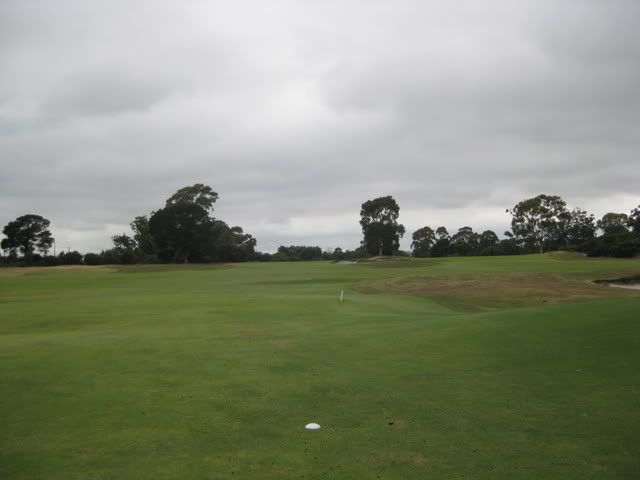
If you can clear the ridge, you are the opened up to a view of the green, guarded by bunkers short and right, and edges that shun balls off the putting surface.
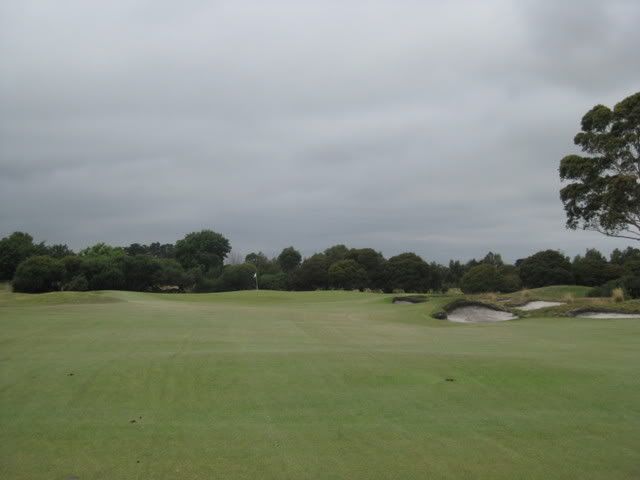
The second is a dogleg left Par 4, with the fairway guarded by bunkers on the left, and long grass through the fairway to the right. The ridge from the 1st hole is dying down here, but one can see how a weak drive short of the ridge leaves a much more challenging approach than one that clears it
Here is a short drive
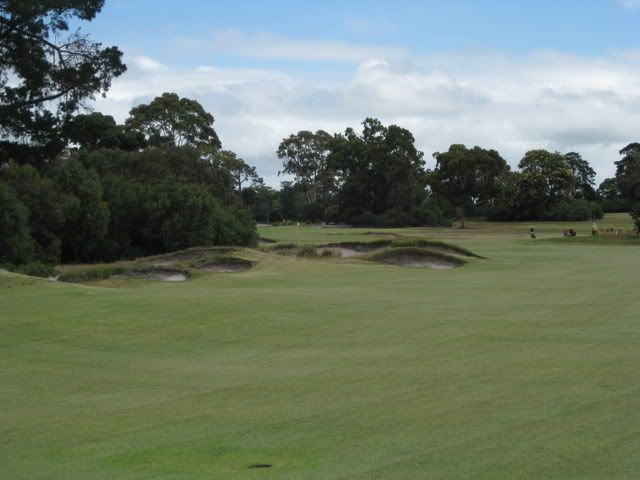
And here is one that goes a bit farther. Note the short third hole in the background.

The green at the tricky Par 4 3rd is shown below. The sensible shot from the tee is a mid-to-long iron that allows for an easier wedge shot into this raised green with bunkers short, right, and left.
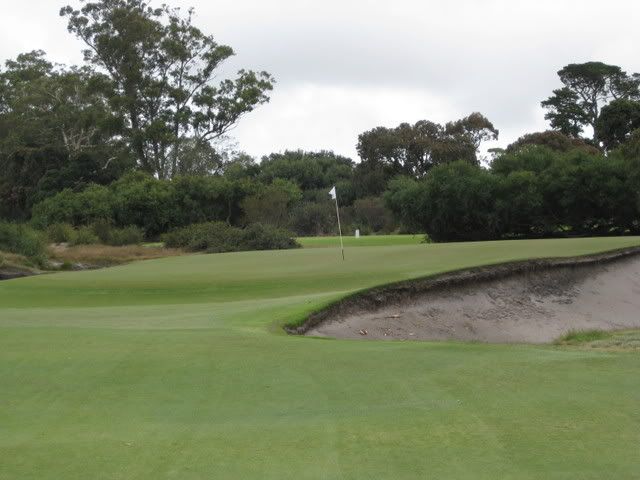
Moving ahead to the Par 4 6th -- one might think that there would be some similarities to the 1st, as they play parallel to each other over the same ridge (though in the opposite direction), but nothing could be further from the truth. Hugging the left seems to open up the green complexe, which is one of the biggest on the golf course, and also full of some of the most contour, both on and around the surface.
From the fairway on 6. Note the rigidity of the flag itself at the green, which underscores the importance of well-struck shots throughout the round.
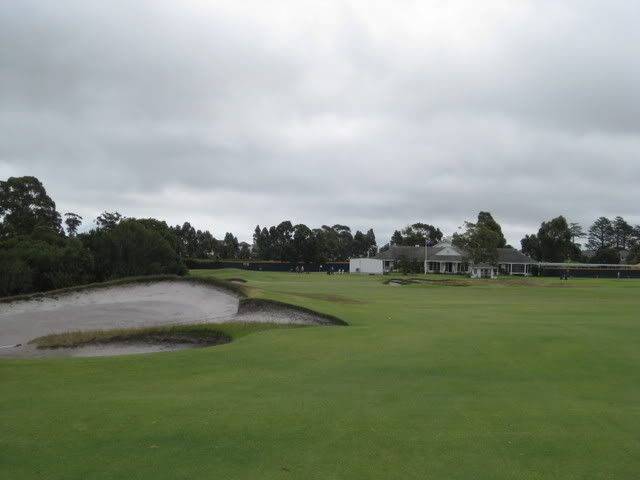
A picture of the 6th green from the neighboring 1st tee. Note the bold contouring in the surrounds which feeds into the green itself, particularly the raised back portion (the right side of the image)
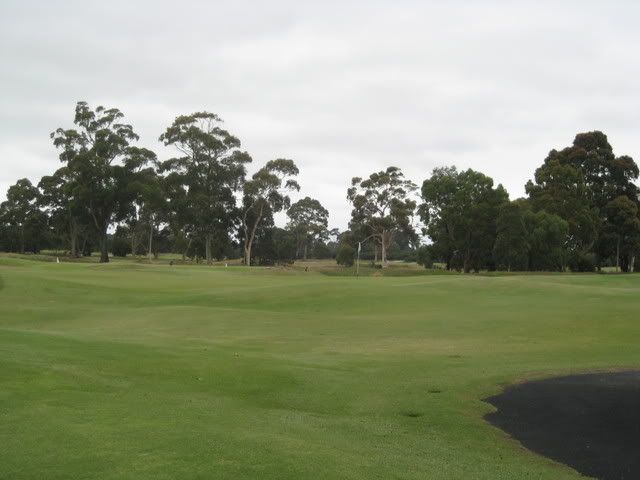
The 7th is a shortish par 5, where a strong drive must contend with a bunker on the left that protrudes out into the fairway. The picture below is taken from the beginning of the fairway.
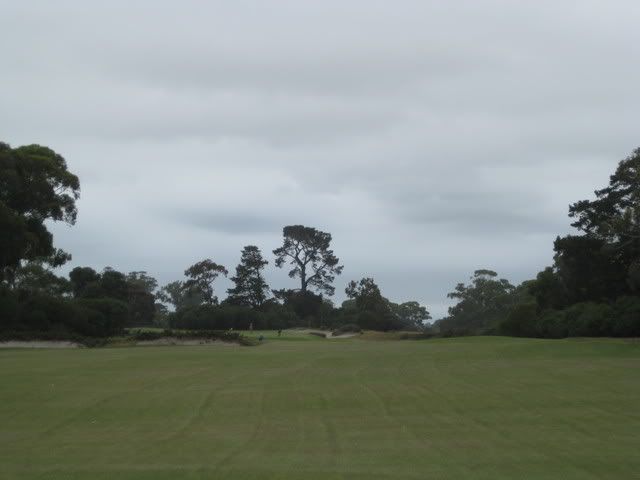
The 7th green sits wonderfully into the hillside, and is guarded in the front by a deep swale.
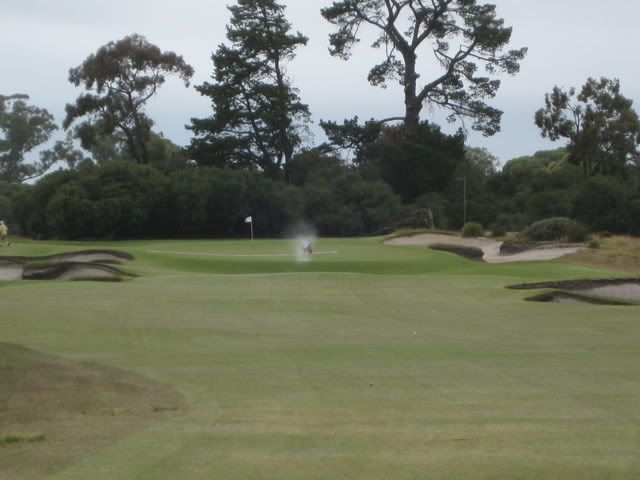
The 9th starts with a blind long iron (aimed at the power lines in the distance), and is a shortish hole that is vaguely reminicent of the 12th at Pine Valley. A well played drive is key, as playing too short, or too far to the side could obscure the view of the green.
The view from a poorly struck drive

And with a good angle (enhanced by the zoom lens)
